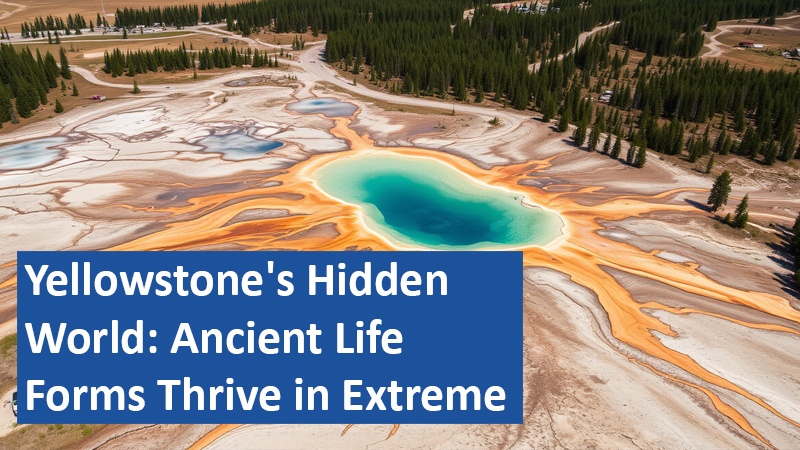
Scientists have discovered ancient microorganisms thriving in Yellowstone National Park’s harshest environments, offering new insights into the origins of life and potential extraterrestrial habitats.
######################################################
Now exclusively try Amazon Prime and Prime Video free for 30 days!
##########################################################
A Window into Earth’s Past
Researchers from Montana State University have identified unique microbial communities in Yellowstone’s acidic hot springs. These archaea, believed to be some of the oldest life forms on Earth, were found in the Smoke Jumper Hot Springs, where temperatures reach 176°F (80°C) and acidity levels rival battery acid. The discovery provides a rare glimpse into the conditions that may have existed on early Earth and potentially on other planets.
Thriving in the Extreme
What makes these archaea remarkable is their ability to process carbon monoxide, a gas toxic to most life forms. This unique metabolism allows them to survive in an oxygen-poor environment, similar to conditions that may have existed on early Earth or potentially on other planets. The extreme conditions in Yellowstone’s hot springs mimic those found in deep-sea vents and other harsh environments around the world, highlighting the adaptability of life.
Implications for Astrobiology
The discovery has significant implications for the search for extraterrestrial life. If life can exist in such extreme conditions on Earth, it opens up the possibility of finding similar organisms on other planets or moons with harsh environments, such as Mars or Jupiter’s moon Europa. The study of extremophiles in Yellowstone could provide valuable insights into the types of life that might thrive in similar conditions elsewhere in the universe.
Advanced Research Techniques and Future Directions
The team used cutting-edge genomic sequencing techniques to identify and study these microorganisms without the need for laboratory cultivation. This approach provided a more comprehensive understanding of the microbial ecosystem and its unique adaptations. Future research will focus on further characterizing these ancient life forms and exploring other extreme environments in Yellowstone and beyond. The ongoing studies highlight the importance of preserving these unique ecosystems for future generations to study and learn from.
This discovery in Yellowstone’s extreme environments not only sheds light on the resilience and adaptability of life but also expands our perspective on where life might exist in the universe.
How do you think these findings might influence our search for life beyond Earth? Share your thoughts in the comments!
Based on content from www.futurezone.de and own research.